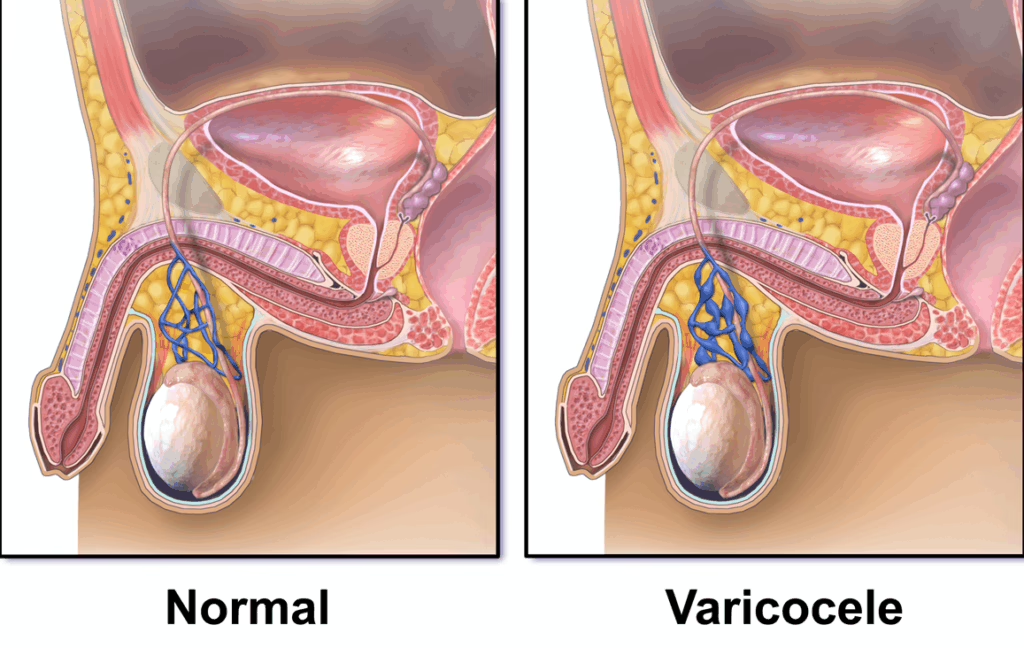A varicocele is a condition where veins in the scrotum become enlarged and dilated, similar to varicose veins that can occur in the legs. It typically develops in the network of veins above and around the testicle, most commonly on the left side.
Varicoceles: A Common Condition

Image courtesy of Blausen Medical Communciations
In simple terms, it’s like having swollen or twisted veins in the scrotum. These enlarged veins can sometimes feel like a “bag of worms” when examined. They occur when the valves inside the veins don’t work properly, causing blood to back up and the veins to stretch and enlarge.
The condition is quite common, affecting about 15% of adult men, with most developing during adolescence when testicular growth is rapid.
How Varicoceles Develop
Several factors can cause a varicocele to develop:
- Anatomy of veins – The most common cause relates to the anatomy of testicular veins. The left testicle’s vein drains into the left renal (kidney) vein at a 90-degree angle, which creates higher pressure than on the right side where drainage is more direct. This anatomical difference explains why about 85-90% of varicoceles occur on the left side.
- Defective vein valves – Normally, tiny one-way valves in veins prevent blood from flowing backward. When these valves fail, blood can pool in the veins, causing them to enlarge.
- Increased pressure – Any condition that increases pressure in the abdominal or pelvic veins can contribute to varicocele formation, such as heavy lifting or straining.
- Genetic factors – There appears to be some hereditary component, as varicoceles can run in families.
- Age – Varicoceles typically develop during puberty when blood flow to the testicles increases significantly.
Most varicoceles don’t cause symptoms and don’t require treatment. However, some men may experience discomfort, pain, or fertility issues. When treatment is needed, there are surgical and non-surgical options available to redirect blood flow away from the affected veins.
Diagnosing Varicoceles
A doctor will examine the scrotum while the patient is standing, as varicoceles are more prominent in this position due to gravity. They may ask you to perform the Valsalva maneuver (bearing down as if having a bowel movement) which increases intra-abdominal pressure and makes varicoceles more noticeable.
Varicoceles are typically graded on a scale:
- Grade 1: Small, only detectable during the Valsalva maneuver
- Grade 2: Moderate, palpable without the Valsalva maneuver
- Grade 3: Large, visible through the scrotal skin
If the physical exam is inconclusive — or to confirm a suspected varicocele — an ultrasound may be ordered. This can measure blood flow in the affected veins.
Treatment Options
At Monterey Bay Vascular, we offer advanced minimally invasive treatment options for varicoceles, including Varicocele Embolization. This procedure involves making a small incision in the skin, after which a catheter is inserted and guided to the affected area. Blocking agents are then released through the catheter and into the varicocele, to redirect blood flow to nearby healthy veins.
Experiencing varicocele symptoms or recently diagnosed? Explore your treatment options by scheduling a consultation with our dedicated and caring team. With clinics in Monterey Bay, Salinas, and Aptos, we’re here to help you find effective relief.
